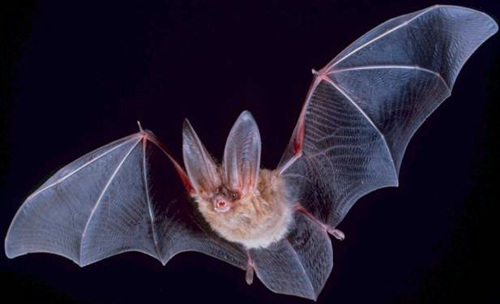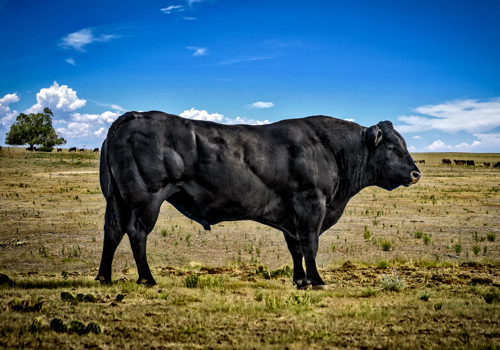
How could you engineer a dragon using traits like flight, fire, and scales?
April 3, 2025

- Related Topics:
- Animal biology,
- Futuristic science,
- Quirky questions
A curious adult from Austin asks:
"I have a theoretical question. If you wanted to make a dragon, what are the possible ways to go about it? For example, if one took the characteristics of bird or bat for flight, the characteristics of a bombardier beetle or a spitting snake; genetic structure of multiple stomach of a cow, and the scales of a snake; how could you enhance and combine such features?"
Alright - so could we do this? Could we make a dragon by combining some of the most useful features of other creatures like bats, snakes, or beetles? With the science we have today, the short answer is not yet. Is it possible? Maybe one day. What we’ll need is a ton of creativity, continuation in cutting edge technology and science, and an ethical discussion surrounding our potential creation.
Here’s how we might go about it, theoretically speaking, while keeping our inner scientist and fantasy lover alive.
How to Train Make Your Dragon
Step 1: Building the Wings
What is the first thing you think about when you think of dragons? Perhaps that they fly.
If we want our dragon to fly, we need wings. We could take inspiration from bats, which have wings made of skin stretched between their elongated fingers. In order for us to create this effect in another species, we could manipulate a few genes responsible for this winged pathway. The first and most obvious choice would be increasing Sonic HedgeHog (SHH) expression. SHH plays a key role in limb development by guiding the growth and patterning of limbs, making it crucial for producing elongated structures like wings. Interestingly enough, bats undergo a second wave of SHH expression as compared to creatures without this webbed membrane (like mice)1.
We might also want to take a look at Hox genes, these genes are responsible for the development of certain body parts in animals. An increase in HoxD10, 11, 12, and 13 may contribute to the elongation of bat wings2. These are all transcription factors expressed more highly in bat wings compared to their other body parts.

But let’s face it, making something this big fly is a tall order. Birds and bats are small for a reason—the bigger you are, the harder it is to stay airborne. So we’d need to make our dragon light but strong…which brings us to bones.
Step 2: Lightweight Bones
Birds have hollow bones reinforced with struts, which make them light enough to fly without sacrificing strength. To give our dragon this advantage, we’d have to mimic the genes that regulate bone density and structure, like with the gene BMPR1A3. If we could add this into the genome of our dragon, we could have a stiff but lightweight skeleton needed for flight.
Step 3: Adding Scales and Fireproof Skin
Dragons are often depicted with scales—kind of like a snake or lizard. Scales develop from the same genetic pathways as hair, particularly the EDAR and WNT signaling pathways4. We could manipulate these pathways to create overlapping, protective scales.

As for fireproofing? While no animals have evolved naturally to be fireproof, some species’ adaptations, like the tough keratinized skin of armadillos or pangolins, could inspire a protective, heat-resistant coating. Advanced bioengineering might involve adding materials like silica to skin cells for extra durability.
Step 4: Breathing Fire

Here’s where we’ll have to get really creative! Put on your science cap for this one. To mimic a fire-breathing dragon, we’d need a system similar to the bombardier beetle. These insects store two chemicals—hydroquinone and hydrogen peroxide—that mix and combust when sprayed out. The genes for producing these chemicals could theoretically be transferred into an engineered stomach or gland in our dragon. But…controlling this reaction safely inside a living creature would be a huge challenge.
Alternatively, we could look at snakes for inspiration. For example, spitting cobras shoot venom from specialized glands connected to their fangs. By modifying this system, we might create a dragon that sprays flammable liquid instead of venom. We would need a way to ignite the flammable liquid…perhaps teeth that can strike together to ignite the flame.
Step 5: Digestive Overhaul
After a day of flying and breathing fire, ANY creature would be hungry! So how are we going to get energy into this beast? Borrowing from cows, we could engineer a multi-chambered stomach to maximize energy extraction. Genes that control rumen development (like FOXA25 and TGFB16) could be tweaked to create a highly efficient digestive system. This would let our dragon process a variety of foods. Perhaps one stomach could be used to grind bones…
Step 6: Super-Sized Muscles
When I think of a dragon, I think of a strong and highly muscular flying creature. In order for our dragon to get its “summer bod” we are gonna take a look at myostatin, which normally limits muscle growth. Knocking out or modifying this gene (as seen in super-muscled cows and dogs) could give our dragon the strength it needs to soar (and terrify the townsfolk).

Last But Not Least: Consider Ethics and Challenges
Alright, time to switch gears. Even if we could combine all these traits, there are huge challenges. Genes don’t always play nicely together, and creating such a hybrid could lead to unforeseen complications. Plus, there are big ethical questions: Should we create such a creature? Would it have a good quality of life?
Science is amazing, but it comes with responsibilities. For now, dragons might be best left to the realm of fantasy…but who knows what the future holds?

Author: Angelica Raney
When this article was published in 2025, Angelica was a MS candidate in the Department of Genetics, studying Genetic Counseling in the School of Medicine at Stanford. Angelica wrote this answer while participating in the Stanford at The Tech program.
 Skip Navigation
Skip Navigation
